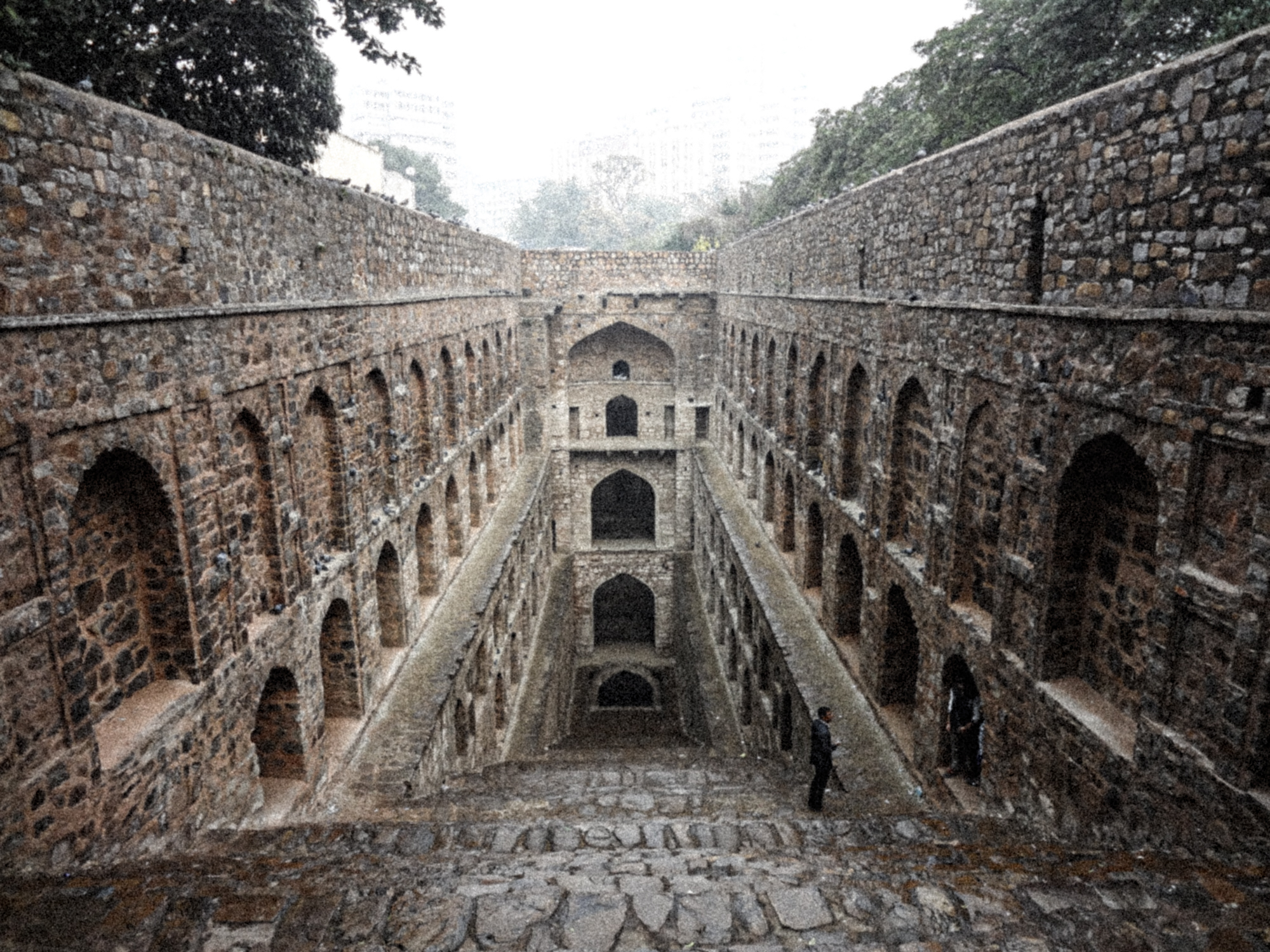DELHI STEPWELL RESTORATION
Delhi, India
Archaeological Survey of India
Baolis, or stepwells are underground reservoirs in which water can be stored, close to the level of groundwater to ensure a constant supply of water during the dry season, one of two monsoon seasons across the Indian subcontinent. Baolis were first constructed as rock-cut stepwells between 200 and 400 AD to ensure water during periods of drought. While stepwells are utilitarian, they also have significant religious, social and cultural significance, and some have rooms built to provide shelters to caravans. The earthquake proof construction and cool microclimate under the earth has made baolis a sanctuary not only for collecting water, but also for bathing, meditation and prayers. In Delhi, there are an estimated 32 stepwells, with 16 lost or demolished, and 14 accessible to the public. Three of the baoli are permanently dry. The Indian National trust for Art and Cultural Heritage began a project to de-silt and restore the 16 baoli that have not been lost, in an effort to bring back traditional means of water security and resilience against an increasingly erratic monsoon cycle that has deepened the water crisis across India, especially in urban centers like Delhi. To rehabilitate the stepwells, garbage and debris must first be removed, and then the stepwell must be desilted to reconnect the reservoir to the water table. In areas where there is significant unregulated pumping from wells, groundwater levels may be significantly below the lowest depths of the baoli, presenting a need for stewardship not only of the stepwell itself, but also equitable water policy for the surrounding areas to recharge groundwater.
2014 - ongoing
14 acres
700 feet above sea level
2014 - ongoing
14 acres
700 feet above sea level

tags: water conservation, restoration, resilience, engineering, government-driven, watershed degradation, drought, extreme heat, poverty, heritage, cultural preservation, indigenous and traditional knowledge, commons, Asia, Indomalaya, Savanna/Tropical Grassland
References:
Chandra, Sharad. “Steps to Water: Stepwells in India.” Chitrolekha International Magazine on Art and Design 5, no. 2 (2015).
Unnikrishnan, Hita, Sreerupa Sen and Harini Nagendra. "Traditional water bodies and urban resilience: a historical perspective frm Bengaluru, India." Water History 9 (2017): 453-477.
Links:
https://www.outlookindia.com/newsscroll/delhi-baolis-stepping-into-the-past-to-manage-water-needs-today/1604154
https://artsandculture.google.com/exhibit/baolis-of-delhi-indian-national-trust-for-art-and-cultural-heritage/QRUUiMQd?hl=en
https://www.archdaily.com/395363/india-s-forgotten-stepwells
https://www.economist.com/books-and-arts/2019/07/13/indias-magnificent-stepwells-are-relics-of-a-nuanced-history
https://timesofindia.indiatimes.com/city/delhi/Delhi-Dwarkas-Lodi-era-baoli-restored/articleshow/47218940.cms#:~:text=NEW%20DELHI%3A%20A%20small%20baoli,was%20discovered%20in%202010%2D11.
http://intach.org/